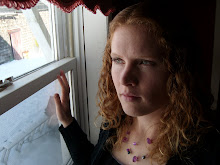 But aside from this, the actual look of the square was rather disappointing...a big concrete slab basically. We felt gypped:
But aside from this, the actual look of the square was rather disappointing...a big concrete slab basically. We felt gypped: Well, they were working on some pretty flower arrangements at least:
Well, they were working on some pretty flower arrangements at least: But the reason we wanted to see it anyway was not for its aesthetics, but for its history, which has a lot to do with Chairman Mao, who led the communist party in ruling China from 1949-1976. He and his fellow leaders were responsible for countless deaths and religious and cultural desecration, both in China and Tibet. Yet, he is still revered in a cult-like way in the country, and no one is allowed to say anything negative about him. He's on all the money, and you can buy many, many kitschy souvenirs with his face on them, from statues, videos, and wristwatches. It's kind of weird. Anyway, I digress. Here's a short summary from wiki about what happened there in 1989:
But the reason we wanted to see it anyway was not for its aesthetics, but for its history, which has a lot to do with Chairman Mao, who led the communist party in ruling China from 1949-1976. He and his fellow leaders were responsible for countless deaths and religious and cultural desecration, both in China and Tibet. Yet, he is still revered in a cult-like way in the country, and no one is allowed to say anything negative about him. He's on all the money, and you can buy many, many kitschy souvenirs with his face on them, from statues, videos, and wristwatches. It's kind of weird. Anyway, I digress. Here's a short summary from wiki about what happened there in 1989:[There] were a series of demonstrations in and near Tiananmen Square led by labor activists, students, and intellectuals in the People's Republic of China (PRC) between April 15 and June 4, 1989.So, friends, that was why we walked the underground sidewalk, had our bags x-rayed, and went to see the Square. Also, Mao's body is in a mausoleum there, and we wanted to see it, but couldn't...they've restricted viewings for the Olympics.While the protests lacked a unified cause or leadership, participants were generally against the authoritarianism and economic policies of the ruling Chinese Communist Party and voiced calls for democratic reform within the structure of the government. The demonstrations centered on Tiananmen Square in Beijing, but large-scale protests also occurred in cities throughout China, including Shanghai, which stayed peaceful throughout the protests.
In Beijing, the resulting military crackdown on the protesters by the PRC government left many civilians dead or injured. The reported tolls ranged from 200–300 (PRC government figures), to 300–800 (The New York Times), and to 2,000–3,000 (Chinese student associations and Chinese Red Cross).
Following the violence, the government conducted widespread arrests to suppress protesters and their supporters, cracked down on other protests around China, banned the foreign press from the country and strictly controlled coverage of the events in the PRC press. Members of the Party who had publicly sympathized with the protesters were purged, with several high-ranking members placed under house arrest, such as General Secretary Zhao Ziyang. The violent suppression of the Tiananmen Square protest caused widespread international condemnation of the PRC government.

No comments:
Post a Comment